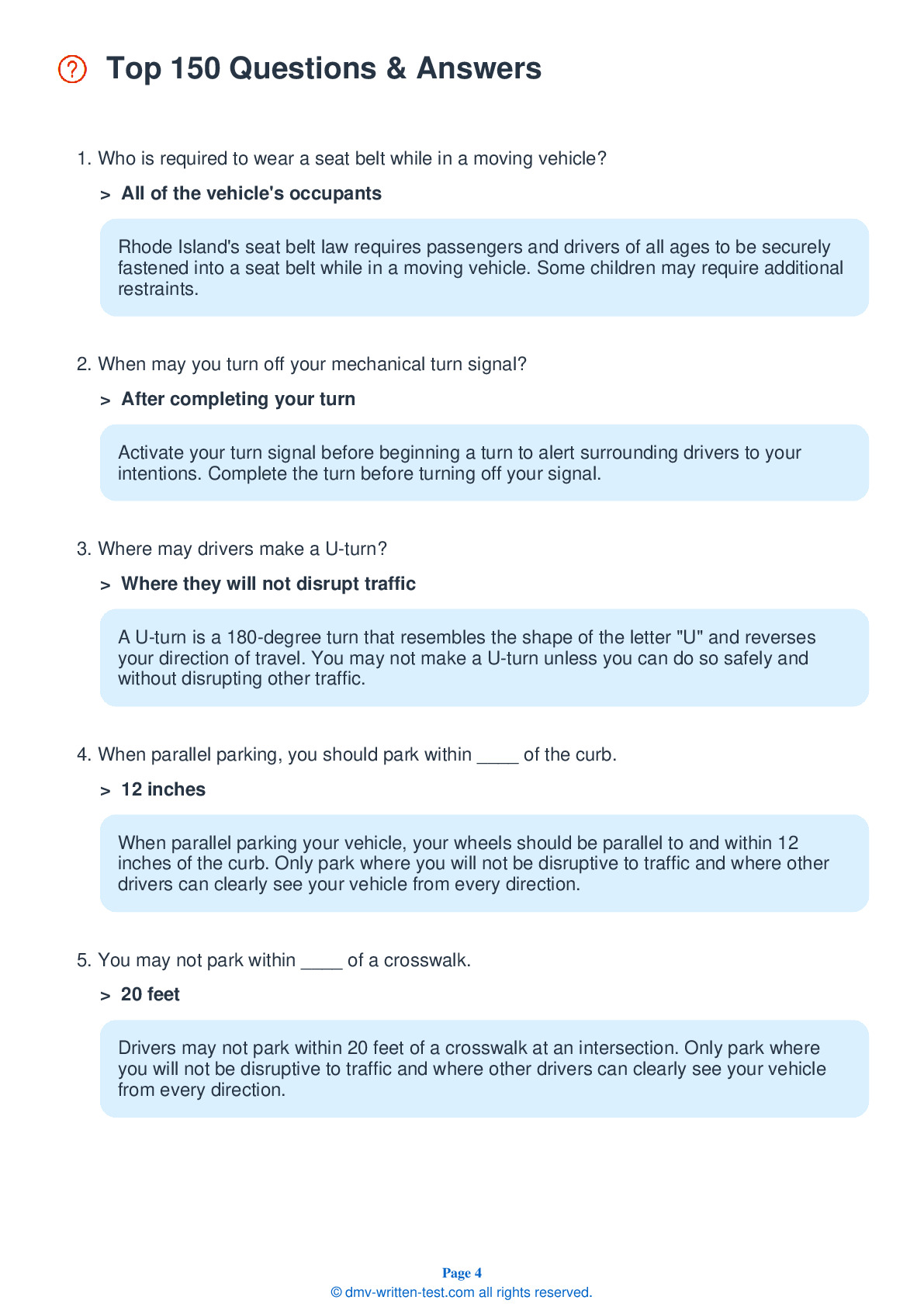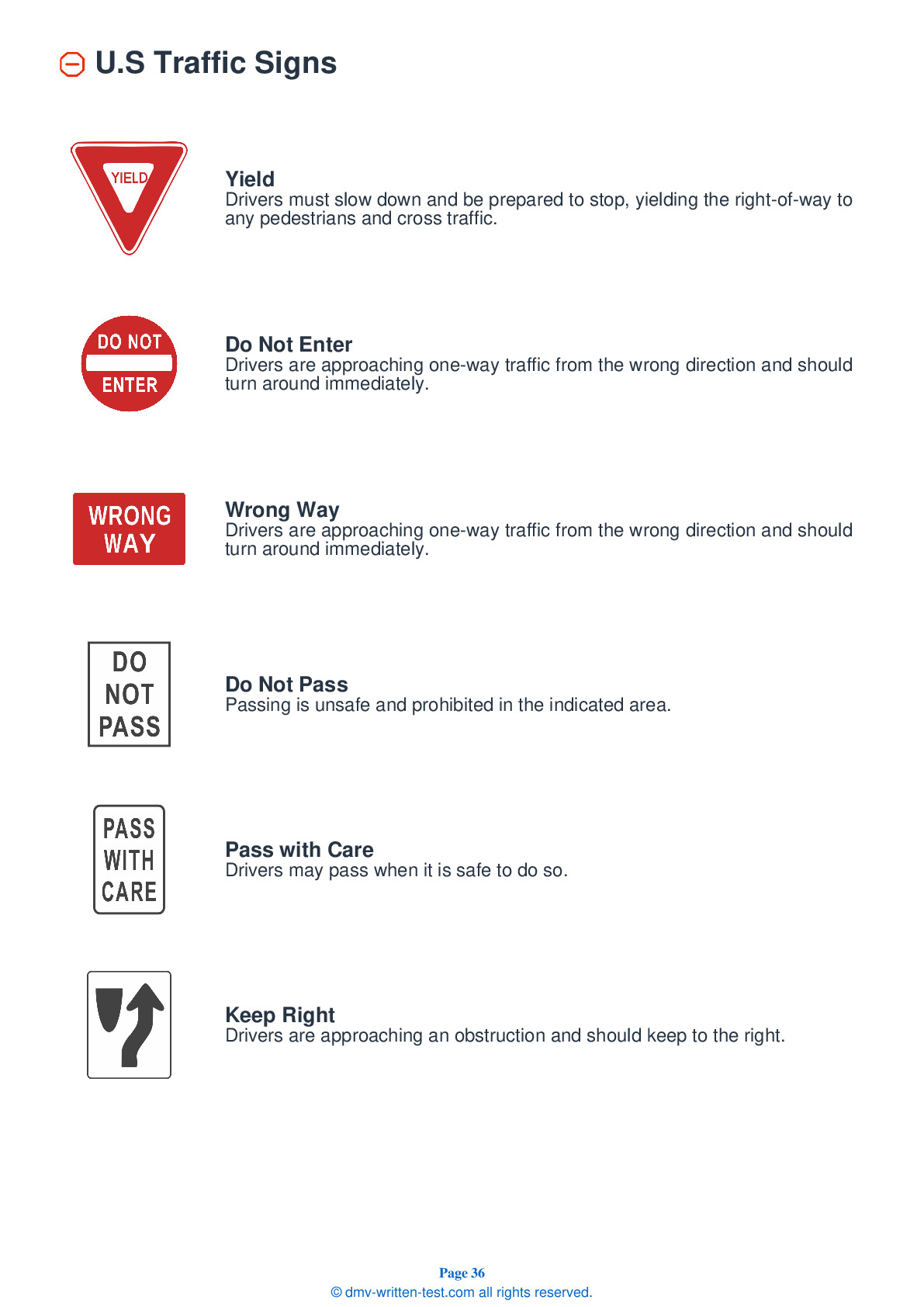2025 Rhode Island Permit Test 18
The following questions are from real DMV written tests. These are some of the actual permit questions you will face in Rhode Island. Each permit practice test question has three answer choices. Select one answer for each question and select "grade this section." You can find this button at the bottom of the drivers license quiz. For a complete list of questions and answers for Rhode Island please visit https://cheat-sheets.dmv-written-test.com/en/rhode-island/car.
Number of Tests
Number of Question
Passing Score
1. While driving on a two-lane road without bicycle lanes, you encounter a bicyclist traveling in the same direction. What is the safest way to pass the bicyclist?
Explanation
You should pass a bicyclist the same way you would pass any other vehicle, but not so fast or close to them that you throw debris in their face or blow them around with the draft of air from your vehicle. Allow at least 3 feet of space between your side mirror and the bicyclist, or at least 5 feet on higher speed roads or when there is a group of bicyclists. Honking unnecessarily may startle riders and make them more likely to crash.
2. Which statement about speed is true?
Explanation
As speed increases, the chance of a fatality increases. If you are moving faster than 80 miles per hour, you have almost no chance of living through a crash. Driving more slowly than other traffic can also be dangerous because other motorists may become impatient and make dangerous moves to pass you.
3. A diamond-shaped sign is a:
Explanation
Warning signs are normally diamond-shaped and yellow, although orange warning signs are used in work areas. Such signs warn that you are approaching a hazardous location or an area where special rules apply.
4. How do you check your blind spots?
Explanation
Blind spots are areas around your vehicle that you cannot see by using your mirrors. Check your blind spots by turning your head and glancing over your shoulders.
5. If an approaching train is near enough or going fast enough to be a danger, you must:
Explanation
You should look and listen for trains before crossing any railroad tracks. If an approaching train is near enough or going fast enough to be a danger, you cannot go across the tracks. This is true even if they have no signals or the signals are not working.
6. Orange is the color of signs used to communicate with drivers in construction work zones.
Explanation
Most signs in work areas are orange and diamond-shaped, although some signs are rectangular. These signs and traffic control devices are commonly reflective to better attract your attention at night.
7. You are waiting in the intersection to complete a left turn. You should:
Explanation
You must always signal before turning or changing lanes. You should keep your wheels straight while waiting to make a left turn. If another vehicle hits you from behind, this ensures that you will not be pushed into oncoming traffic.
8. When driving on wet pavement, it's important to remember:
Explanation




